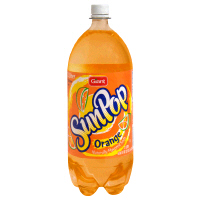People in the computer business are fond of declaring that the "PC is a commodity," as an excuse for why the final equipment manufacturers (Dell, Lenovo, Acer, etc.) make such low margins. The average operating income is about 2%. Let’s define a commodity as a product with little opportunity for differentiation and with plenty of providers. Or, said another way, a commodity is a category of product where people don’t care which brand they buy, because they perceive that they are all the same. I can appreciate the challenge of making money in such a category, as suppliers will naturally compete on price. But are certain product categories inherently commodities, or is commoditization a function of the behavior of the players in those categories?
If commoditization were sufficient cause for low margin, why does a cup of coffee deliver 90% gross margin, along with anything in the cold beverage case at Spiffy Mart? Why does the corn flake with the rooster on it make 80%+ GM and retain high market share , when, I assure you, anyone can make a yummy corn flake? At the same time, it seems like any device with an on/off button earns only subsistence level profit: DVD players, TVs, mobile phones, printers, personal computers.

Perhaps it is a function of category. Maybe electronics are rational purchases where the price/function ratios can be easily compared between offerings, and therefore margins quickly fall to just above zero: a continuation of the lowest-MIPS-per-dollar approach from the early days of mainframes. But observe, Apple personal computers generate something around 30% GM and 10% OI – this gleaming exception undermines the rational category theory (a Mac does the same things a Windows computer does). Oh, and I remember that Sony has consistently commanded a premium in TVs (something you buy on specs like size and contrast ratio) and A/V equipment. So not all electronics offerings generate "commodity" level margins.
The difference, I submit, is brand value, and a related item, marketing investment. The top PC makers spend less than 1.5% of sales on marketing, while consumer packaged goods are supported with 10%+. Apple spends 3X per computer sold on marketing activity vs. the Windows PC competition . Higher marketing spend is correlated with higher margin, and the additional gross margin is greater than the cost of marketing, so net profit benefits. So simple, a cave man could do it…
Even I, a brand weenie, will admit that there are other factors. Take the tacit price collusion in certain categories, like breakfast cereal or beverages. Occasionally, some cereal factory owner observes that he could charge 50% less and still make money, so ValueCrunch arrives for $2 per box, and they pick up some share. Does the rooster follow the price down to protect share? Nope. They run promos, in-store taste tests, and NASCAR driver appearances so the next time a person walks in the store, he doesn’t even see ValueCrunch. Starbucks competes with Caribou for share, not by lowering price, but by promoting Gingerbread Delight and playing custom collections of cool music in the store (and by being everywhere). When SuperPop shows up at $0.30 per bottle, the other $1.25 brands ignore it like the new kid at school. The uncool libation dies of social stigma.

These are examples of Being Smart that apparently the computer and consumer electronics (CE) makers don’t get. Another factor is the customer /product experience, but I suggest this is a contributor to brand value, the real driver of margin. Many superior products have failed due to poor brand value.
How did CE and computer companies miss the gravy train? I have not made an academic study of it, but since this is a blog, I will opine…There are two reasons: 1) poor marketing capability, and 2) slippery slopes.
First, electronics companies are not very good marketers. They copy each other, they commoditize their own categories through spec/price selling, they do not make an emotional connection, and they abuse us with terms like megapixels, discrete graphics, and front side bus. One cause may be staffing: a majority of marketing positions in CE and computer companies are held by former engineers. Engineering (job) leads to product management, leads to product "marketing," leads to marketing (leads to being thought of as stupid by fellow engineers). Before I offend some friends who have followed this path, let me hasten to add that I know people in these positions who are very smart, and who leverage their technical backgrounds along with learned marketing skill to do a great job. BUT, there is a good reason that P&G has been the talent source for every other industry looking to upgrade its marketing capability over the last two decades. P&G builds businesses from the brand up, and orients its decision making around marketing. Observe that PC companies apply most of their marketing funds to communicating a special deal (i.e., a price reduction). They are spending money to emphasize that you should only buy if you can get a great rebate or a free printer (you know, when the margins are lower). Apple never advertises deals – they invest in creating desire, which keeps prices high.
The second issue is Slippery Slopes. I’m referring to competitive patterns that take hold in a category. When Compaq entered the PC business with a lower priced equivalent to the IBM PC, followed by Dell, IBM unfortunately followed the path of competing on lower price for share. Thus the slippery slope emerged, helped by Microsoft and Intel’s subsidization of marketing which presents PCs as assemblies of standard parts. Thus, the prospective customer was trained to compare specs and price, and inertia makes it very difficult to reverse this. Similarly, the CE companies are in a continual race to the bottom. I recently saw a DVD player at HH Gregg for $19.99. I remember when they were $1000. Yes, the internal components get cheaper over time, but properly managed prices will reflect the value of the product to the customer. Starbucks can get $4 for lovely coffee experience, while the prices of PCs, which have transformed the world and provide astonishing enablement to their users, have fallen 50% in 5 years and continue to decline at double digit rates. Bad marketing, and a slippery slope.
Regardless of how we got to this point, the VALUE to the user of a personal computer is immense. One billion are in use. They deliver email, Skype video (how I saw my baby roll over for the first time), Excel, Flickr, BBC.com, e-business, Pandora, Facebook, PayPal, Craigslist, Wikipedia, Kiva.org. Your new one does a lot more than your old one. If you take my hard drive and backups, I’ll pay $20,000 to get them back. The fact that the benefit delivered is rising rapidly, while the prices are falling rapidly, is proof that PC prices are not aligned with value. This is an opportunity.

The PC is not inherently a commodity, in spite of the fact that most have the same Intel chips and Microsoft OS. This is the essential barrier for a PC maker that wants to rebuild margin: cheap, readily available substitutes with no perceived difference (this is probably a better definition of a commoditized market than I offered above). I don’t care which salt I buy; they are all salty. But I buy Morton without comparing prices. This is brand value. Could a PC brand not achieve the same thing?
Coming soon: how PC companies, and other purveyors of "commodities" can fix their margins.






